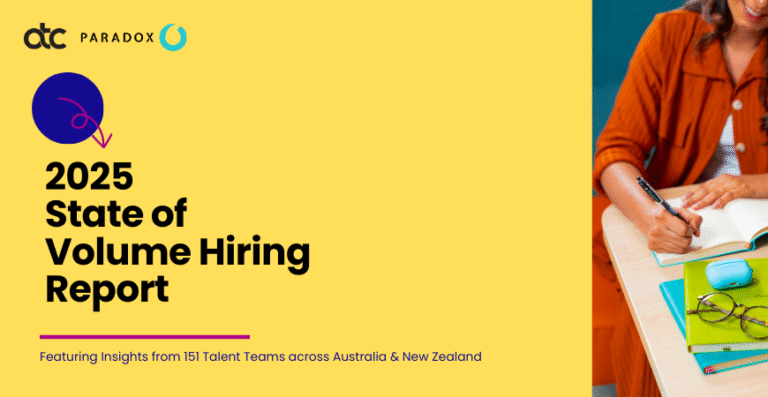January 2024 is the beginning of the decade of reinvention.
I have been in this profession for more than 30 years, and other than the introduction of computers, HRIS, and ATS systems, recruiting looks the same as when I started. We do things the same way; we embrace the same habits and assumptions and rarely use the tools we have effectively. Our productivity (defined as how many requisitions a recruiter can deal with) is about the same.
AI changes it all. Artificial Intelligence is a tool of mass destruction. It has already challenged how we work simply by being able to do what we do (sourcing, screening, assessing, communicating, administering) better than we can. This destruction will lead to new systems and ways of recruiting, the need for new skills and attitudes, and a new charter.
My predictions speak to this and to the global, economic, and social trends that are also deeply changing work and recruiting.
Before I dive into my prediction, here are the global issues that will impact them.
War: There is a 40% chance that Iran, Iraq, Syria, Lebanon, and Israel may be at war. Egypt is a wildcard. The US would be on the front line. And, for the first time since WWII, there is a possibility that NATO could be involved. This would affect hiring, technology development, and the economies of all European countries. A Middle East war would also affect oil supplies and rasie the price of oil with a negative impact on the economy.
Economy: The World Economic Forum predicts a poor year for the world’s economies. Inflation remains high in Europe. If prices remian high and GDP is grows slowly, hiring will be depressed, and firms will be very cautious about adding significant staff or recruiters. Immigration and the potential for oil supplies to be interrupted are major concerns.
Elections: This is an election year in many countries, and the outcomes are very uncertain. More conservative governments may be in power with rollbacks in spending. This is likely to slow hiring.
With all this in mind, here are the trends that I see happening this year.
#1. Generative AI will dominate, and every product will attempt to incorporate AI. 90% certainty
- AI can automate and enhance various aspects of the recruitment process, such as sourcing candidates by generating ideal applicant profiles, crafting personalized outreach messages, or creating job descriptions optimized for search and appeal.
- Incorporating AI into recruitment products can lead to more efficient processes, as it allows for handling large datasets and provides recruiters with the tools to make more informed decisions. For instance, AI can analyze the success rates of past recruitment campaigns and predict the efficacy of various recruiting channels, enabling companies to allocate their resources more effectively.
- Moreover, as AI continues to evolve, it will likely offer even more advanced capabilities, such as natural language processing for better candidate interactions and sophisticated pattern recognition to identify the best potential candidates from a vast pool of applicants. This can significantly reduce time-to-hire and improve the quality of candidates selected for interviews.
#2. Recruiter productivity will double. 50% certainty
- Because AI will augment so much of what a recruiter does, a single recruiter can handle a much larger requisition load. High-volume recruiting or recruiting hourly staff can be largely automated or overseen by a few recruiters. Professional hiring can be significantly augmented with AI tools, new processes, and a change in mindset. Even executive recruitment can be augmented by using AI tools to help find and screen potential candidates and by expediting communications.
- Recruiting leadership will be vital in establishing with recruiters what AI can do best and what they can do best and stop doing those things AI can do.
- New metrics and goals must be developed for recruiters to encourage them to leverage existing tools.
#3. The Circular Supply Chain will be more important than external hiring. 80% certainty
- Because of demographics, talent shortages, and cost concerns, there is already more focus on retention, repurposing current talent, and re-recruiting former employees. This will be a year when developing the workforce will become central.
- By focusing on internal talent pools, companies can foster the development of skills and competencies necessary for a circular supply chain, which is aligned with the broader objectives of sustainable business practices.
- This emphasis on internal talent development and the circular supply chain is aligned with the broader global momentum towards more sustainable and regenerative economic models. Businesses are realizing the benefits of such models, which include increased productivity, reduced operational costs, elevated employee morale, and positive environmental effects.
#4. Job and wage growth will slow, but not everywhere. 80% certainty
- There is every indication that continued robust hiring will slow. The Conference Board predicts that US GDP will grow by less than 1% in 2024.
- Wall Street Journal forecasters predict that hiring may decelerate and unemployment could inch higher in 2024.
- In France, Switzerland, and Sweden, hiring plans appear weaker for the first quarter of 2024 compared to the end of the previous year. There are also indications that unemployment could rise slightly due to economic headwinds, affecting the demand for temporary agency workers, especially in sectors like manufacturing, where new orders continue to decline.
- However, employers in countries like the Netherlands, Belgium, and Germany are entering the year with more optimism regarding their hiring plans compared to the end of 2023.
- For Asia, the economic outlook seems more positive, with the Asian Development Bank forecasting growth of 4.8% for both 2023 and 2024.
- Inflation rates are expected to decline in most Asian countries.
#5. There will be a more cautious and integrated approach to DEI 75% certainty
- The sentiment in corporate recruiting regarding hiring for race or gender is evolving, with a current trend towards a more nuanced understanding of Diversity, Equity, and Inclusion (DEI) practices.
- ·Some firms have eliminated the role of Chief Diversity Officer, but it is not clear-cut that firms are eliminating the role of Chief Diversity Officer en masse.
- However, there is a trend towards integrating DEI responsibilities more deeply within the business functions rather than isolating them within a single role or department.
- There is a shift to more integrated approaches where DEI is part of the business strategy. And there’s a growing emphasis on transparency, objectivity, and consistency in DEI initiatives to foster positive employee relations and inclusive corporate culture. This aligns with the broader societal shift towards equity being viewed as an expectation in the workplace rather than a nice-to-have attribute.
- In addition to these shifts, there is an ongoing focus on systemic changes, such as using AI and analytics to advance DEI by offering a holistic view of the systems involved and capturing opportunities for change.
- Organizations will be in the process of adapting their DEI strategies, with the understanding that people want to work for organizations where they feel included and where their skills are put to good use.
#6. There will be continued growth and importance of the gig workforce, and new payment methods emerge. 80% certainty
- Recent research suggests that gig work is forecast to encompass 50% of the economy by 2027, indicating a large increase in gig workers.
- This reflects a change in attitudes about work and work culture where freedom and flexibility are highly valued. Many gig workers are seeking multiple gigs, and they place great importance on being paid quickly and efficiently, pushing companies to offer more innovative payment solutions.
- This trend is reshaping traditional payroll systems and creating new opportunities across sectors, with an impact estimated to exceed $1 trillion in the US alone. Thus, it is clear that the gig workforce is not just a passing trend but a significant shift in the future of work, one that companies are increasingly preparing to integrate into their long-term strategic planning.
#7. More firms will embrace a four-day workweek 50% certainty
- The likelihood of firms adopting a four-day workweek is increasing, as demonstrated by various trials and company implementations worldwide. In the UK, a six-month trial organized by 4 Day Week Global saw positive outcomes, with 92% of participating companies continuing with the new schedule. Employees reported significant improvements in work-life balance, and companies noticed a reduction in employee turnover.
- Similarly, trials in Iceland were successful, leading to increased morale, reduced burnout, and maintained productivity levels. Consequently, a significant portion of Iceland’s workforce now works fewer hours or is in negotiations to do so.
- While the concept is still emerging in the United States, companies experimenting with the four-day workweek report benefits such as improved physical and mental health for employees and no detriment to business goals or client relationships. Some companies plan to continue this model into 2024, having found that it doesn’t actually eliminate billable hours but rather reduces “fringe time” activities that do not contribute to productivity.
- Large companies such as Amazon, Basecamp, and Microsoft Japan have also been experimenting with or implementing four-day work weeks and noting benefits such as increased productivity and employee satisfaction.
- Legislatively, there are pushes toward a four-day workweek, such as the 32-Hour Workweek Act introduced by Rep. Mark Takano, proposing a reduction in the standard workweek for non-exempt workers from 40 to 32 hours without a loss of pay.
Welcome to the new decade. We will develop a new generation of recruiters who are agile, capable of providing advice and coaching, and not afraid to let go of yesterday.
This article was originally published in the Future of Talent Weekly Newsletter and has been re-published here with permission.







